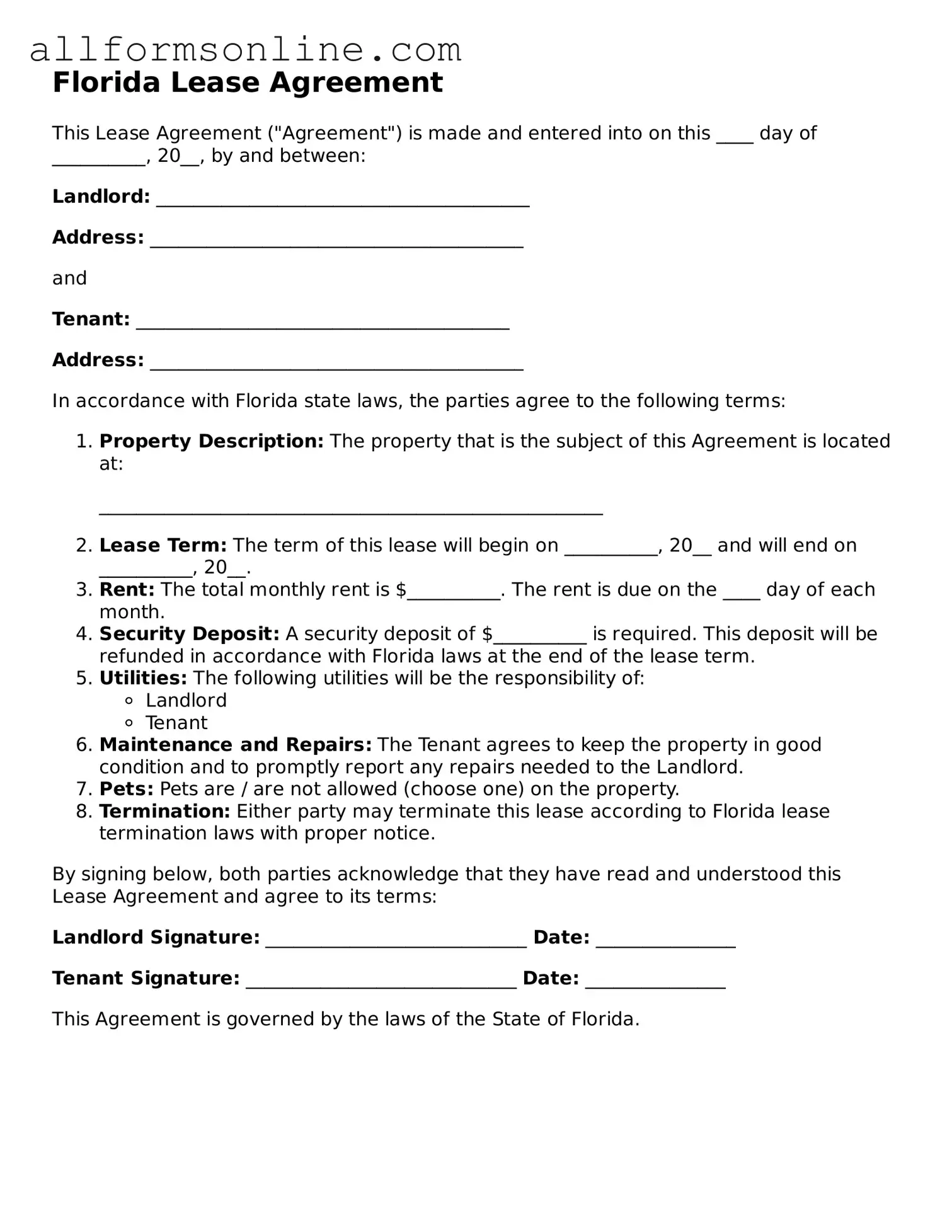What is a Florida Lease Agreement?
A Florida Lease Agreement is a legally binding contract between a landlord and a tenant that outlines the terms and conditions of renting a residential property in Florida. This document typically includes details such as the rental amount, payment due dates, the duration of the lease, and the responsibilities of both parties. It serves to protect the rights of both the landlord and the tenant, ensuring clarity and understanding regarding the rental arrangement.
What are the key components of a Florida Lease Agreement?
Key components of a Florida Lease Agreement include the names of the parties involved, the property address, the lease term (whether it's month-to-month or a fixed term), the rent amount and payment schedule, security deposit details, maintenance responsibilities, and rules regarding pets and guests. Additionally, it often outlines the procedures for terminating the lease and the consequences of breaking the agreement. Each of these elements plays a crucial role in defining the relationship between the landlord and tenant.
How can a tenant terminate a Florida Lease Agreement?
Terminating a Florida Lease Agreement can vary based on the type of lease. For month-to-month leases, tenants typically must provide written notice to the landlord at least 15 days before the next rent payment is due. For fixed-term leases, tenants may be bound to the lease until its expiration unless they have a valid reason for breaking it, such as a breach of contract by the landlord. It's essential for tenants to review their lease terms and understand their rights and obligations before initiating termination.
What happens if a tenant does not pay rent on time?
If a tenant fails to pay rent on time, the landlord has specific rights under Florida law. Generally, the landlord may issue a notice demanding payment. If the tenant does not respond or pay within the specified time frame, the landlord may initiate eviction proceedings. However, it’s important for tenants to communicate with their landlords if they are experiencing financial difficulties, as many landlords may be willing to work out a payment plan to avoid eviction.
